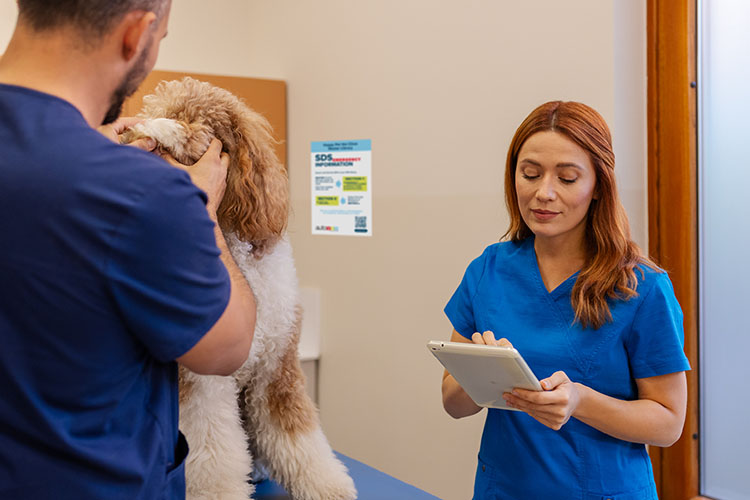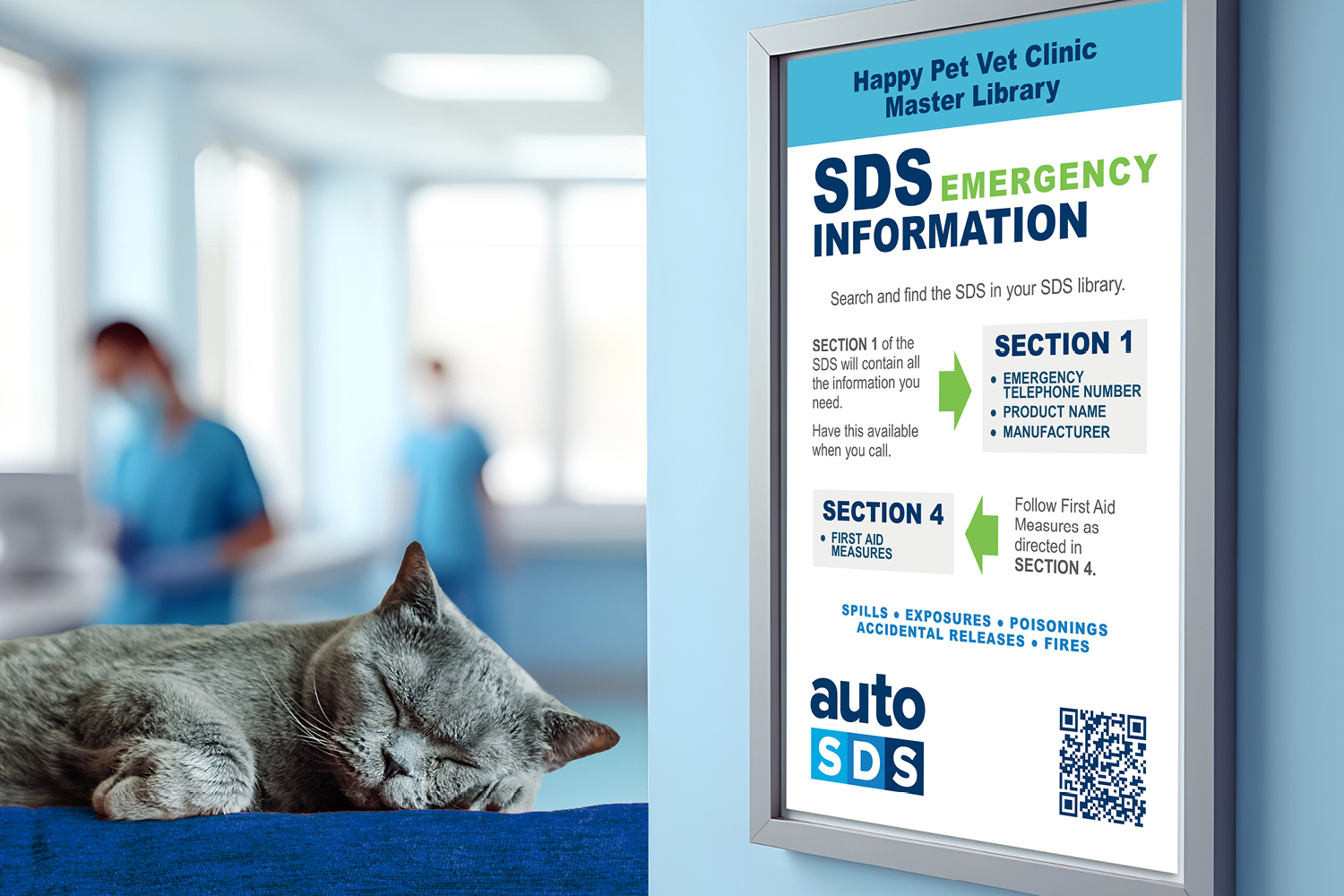
OSHA Requirements for Small and Companion Animal Facilities
By Karson L. Carpenter
There is often considerable misunderstanding as to what OSHA regulates in small and companion animal facilities, and many are confused about the requirements. OSHA, in fact, is concerned with only one thing: the safety of employees. It doesn’t matter what type of facility you work in, or what your job description is; you come under the scrutiny of OSHA.
OSHA, which is an acronym for the Occupational Safety and Health Administration, was formed through an act of Congress and its requirements are federal law. OSHA does not care if the hazard is from a chemical, a bacteria or virus, a scratch or a bite, an electrical device or a fire. The only concern they have is the protection/safety of the worker, and this includes all employees in your workplace.
How to get started
To begin your compliance efforts, choose someone to be your safety compliance coordinator (SCC). A trusted and organized individual is suggested. Next, assign your SCC to review and implement one step at a time, using the following outline:
Hazard Communication Standard
The Hazard Communication Standard deals with hazardous chemicals in the workplace. These include disinfectants such as bleach, anesthetic agents, pesticides, acids, cleaners, etc.
This Standard requires a written chemical safety plan, material safety data sheets for each hazardous chemical/product, labeling of these potentially hazardous products and training of employees who are exposed to them.
Electrical Safety
Electricity is such a normal part of everyday life that it is often overlooked as being potentially dangerous. Everyone has experienced a minor shock but may fail to realize that severe shocks can cause death.
It is important that no extension cords be used, that plugs and cords are checked for wear/intact insulation and that plugs match their outlets (e.g., three-pronged). In addition, cords should not be twisted around each other but should run in parallel and circuits/outlets must not be overloaded.
Means of egress
Every building is required by law to contain adequate exits that allow for the escape of all occupants in case of fire or other emergency. There must be at least two of these means of egress in every facility. Exits must have no locks or fastening devices that may prevent free escape and must be clearly visible and conspicuously marked with illuminated or glow-in-the-dark signs.
Non-exits need to have similar signs that state “Not an exit.” In the event of power failure, reliable emergency lighting must also be available for all exits and signs.
Walking and working surfaces
This part of the OSHA regulation is often called the housekeeping standard. It requires all rooms and passageways to be kept clean, orderly and sanitary. All aisles and hallways must be kept free of debris/clutter and floors must be kept clean and dry. Additionally, stairways must have railings/guardrails, and any ladders used must be OSHA approved.
Ventilation
Ventilation is very important, as a variety of potentially hazardous substances can become airborne and cause illness or injury. To identify if a substance is hazardous in the form of gas, fumes, vapor or dust, consult the appropriate safety data sheet for that product.
Medical and first aid
OSHA regulations/requirements include having medical personnel available (such as a 911 response within 5 minutes) to provide emergency care if needed or to have an employee(s) trained in first aid available during working hours.
A first aid kit should be available for self-aid as well as CPR micro-shields or other barrier devices to use when performing resuscitation. Remember to have emergency numbers posted on the phone and to have an eyewash station installed for flushing of the eyes. Portable eyewashes are acceptable for mobile facilities, but you must ensure that they are approved by the American National Standards Institute (ANSI).
Zoonotic disease
There are numerous diseases encountered in animal health facilities that have the potential to be transmitted to humans. These include rabies, anthrax, MRSA, plague, Pasteurella, salmonella, leptospirosis, ringworm, roundworm, tapeworm, hookworm and giardiasis. Your team needs to be trained in preventative techniques that include proper handwashing and the use of personal protective equipment.
Fire safety
OSHA requires fire safety training. This training must include reviewing a list of all flammables in the workplace and their possible ignition sources. Employees must also know what their responsibilities are in the event of fire and the location of a safe meeting place after evacuation. Having an accessible fire extinguisher and training employees on its proper use is also required.
Record keeping
Proper record keeping is mandatory. Requirements include employee medical records, records of training and safety data sheets. Employees have a right to access these records, and they must be allowed to do so within 15 days of their request.
General safety
OSHA regulations contain what is called the “General Duty Clause.” It basically states that the employer must provide a safe and healthy working environment for all employees. I like to call this the “common sense” regulation. Basically, it would include having such things as isolation protocols, training on animal handling, ergonomics, etc. It is broad in reach and covers areas of safety that do not have specific, detailed written regulations.
Enforcement
OSHA is authorized under the law to inspect all locations in which you do business to determine if the facility is compliant with current safety regulations. Inspections may be conducted with or without advanced notice and are often conducted based upon a current or former employee complaint.
A written citation and notice of proposed penalties will be sent if a facility is not in compliance, and a time period will be set for abatement of any violations found. The employer must post a copy of each citation in a place visible to all employees.
OSHA requirements are designed to serve as the template for your safety program. By appointing a compliance coordinator and making them accountable, rapid progress can be made.
Complimentary audit app
To assist you with designing and implementing such a program, download the Compliance Training Partners Detailed Audit app, available free to Patterson customers through the app store.
In addition, the Patterson team provides a variety of training solutions, as well as required safety products, to ensure that your facility is in full compliance. Find these solutions at pattersonvet.com/compliance.
Click Here to print the compliance guide
About the Author
Karson L. Carpenter serves as president and CEO of Compliance Training Partners. The company partners with Patterson Veterinary to provide compliance solutions for animal health facilities across the United States.
Share
Related blogs

7 Resources to Help You Conquer Compliance
Terms like “OSHA,” “regulatory compliance,” and “hazard communication protocol” may seem intimidating, but by broadening your expertise in these key areas, you’ll find empowerment. From podcasts to webinars, these 7 resources will help you become a compliance champion.

OSHA Compliance: Examining the Foundational Role of Safety Data Sheets
TotalSDS’s Alex Milan and Veronica Marrero offer an overview of the importance of safety data sheets, including two case studies that illustrate the risk of noncompliance. Finally, they share a compelling digital safety data sheet management solution.

Top 7 Questions From our Impact of OSHA Changes Webinar
If you missed our Impact of OSHA'S Hazard Communication Standard 2024 webinar, don't worry - we got you! In this post, we're reviewing seven of the most-asked questions, as well as outlining what has recently changed.